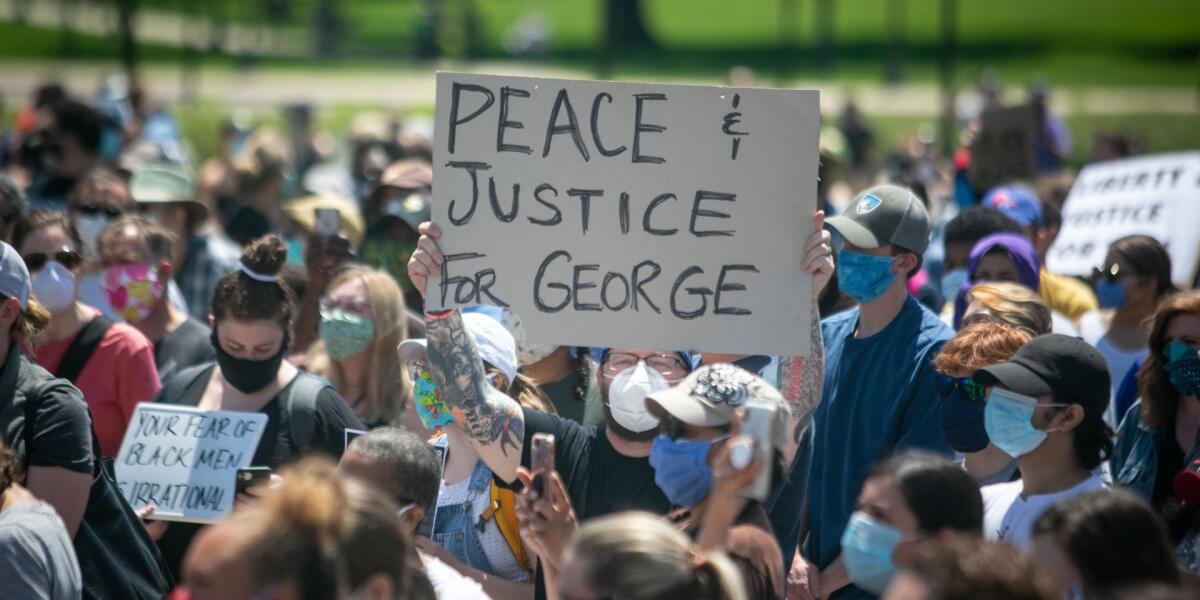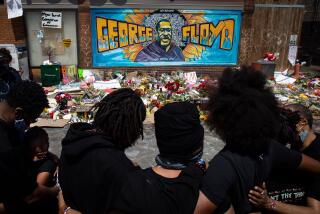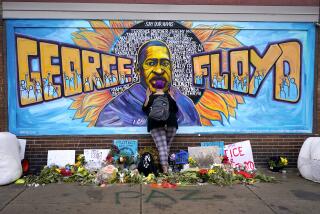Why the murder of George Floyd remains a deep wound to the public psyche

- Share via
A year has passed since the brutal murder of George Floyd by the police. A year of countless protests, endless talks about inclusion and anti-racism, and millions holding their breath while watching the trial of Floyd’s murderer. Numerous Black Americans have been killed by police in the past, so why does it seem that Floyd’s death has brought about a particularly intense public response?
Some observers have pointed to the impact of social media and the pandemic, but little was said about the critical role of humiliation in this case. Yet no training in the world, not even “defunding the police,” is likely to bring systemic change if we do not understand how the dynamic of humiliation severely harms communities of color and what must be done to fight it.
The devastating image of George Floyd lying on the ground, his neck under the knee of a police officer for 9 minutes and 29 seconds, constitutes a quintessential act of humiliation: conduct meant to put down others, to subjugate them, to deny their human dignity. The word humiliation itself comes from the Latin word humus (the ground), so “to be humiliated is to be put down.” Little wonder that forcing Floyd face-down to the asphalt has generated in so many people the painful feeling of humiliation.
Humiliation is a powerful emotion, perhaps “the most intense of human emotions,” as suggested by a study showing that neural processing of humiliation puts a heavier demand on the brain than other negative emotions, such as shame and anger.
A leading researcher on humiliation, the psychologist Donald C. Klein, described humiliation’s tripartite dynamic: a perpetrator degrading a victim in front of an audience. This pattern was on full display in Minneapolis a year ago, as Derek Chauvin knelt on Floyd and killed him in the presence of cameras and civilian witnesses. And, in a perfect fit with studies of humiliation, the uniformed perpetrator exhibited both his superior social status and his contempt toward his victim.
From a year’s distance, it still looks like it was Floyd’s cruel, visible and intentional humiliation that has reverberated around the world. The knee on Floyd’s neck is part of a long line of police maneuvers, most notably the chokehold, that “are designed to humiliate African American” men as a group, as Paul Butler, a law professor and former prosecutor, has pointed out.
Humiliation theorists who coined terms such as “collective humiliation” or “cycles of humiliation” explain that belonging to a group that routinely experiences humiliation makes people suffer by virtue of their group identity. This collective humiliation was powerfully described by James Baldwin, who wrote about his father: “He claimed to be proud of his blackness but it had also been the cause of much humiliation and it had fixed bleak boundaries to his life.”
Baldwin’s linkage of Blackness and humiliation notably correlates with the philosopher Christian Neuhauser’s definition of a “representative group humiliation” — one that occurs when “a whole group is humiliated through the humiliation of one or more of its members.”
This mechanism explains the immense impact of Floyd’s humiliation on African Americans and a year of unprecedented insistence that Black lives matter. It also clarifies why innumerable allies feel similar lingering humiliation: They may perceive Floyd as representing all those who share a belief in racial equality and a just society.
But how does collective humiliation lead to activist pursuits of racial justice? Theorists of emotions have long insisted that emotions are designed to create “action tendencies” necessary for our society’s preservation. Humiliation is associated with two tendencies: to avoid others or to take action against the abusers. The latter action aims to protect the victims from the harsh consequences of humiliation, including depression, powerlessness and other mental wounds. Protesting and painting “Black Lives Matter” in public spaces all over the world are acts of resistance against the humiliating rejection of Blackness.
More generally, the powerful emotion of humiliation motivates people to march, chant and sometimes even attack those who try to stop them, all in an attempt to restore their dignity.
Perhaps the most hopeful feature of this action tendency is the creation of a strong and lasting solidarity. It has generated an anti-humiliation movement that is alive a year after the trauma and very likely for years to come. The long shadow of the knee on Floyd’s neck has created a deep darkness. Yet, the collective humiliation it engendered has the power to ignite what the writer Rebecca Solnit calls “hope in the dark.”
The first anniversary of Floyd’s killing demands reflection on humiliation and its effects. As a society, we must seek structural reforms that cultivate true dignity for all.
Hila Keren is associate dean for research and professor of law at Southwestern Law School.
More to Read
A cure for the common opinion
Get thought-provoking perspectives with our weekly newsletter.
You may occasionally receive promotional content from the Los Angeles Times.









